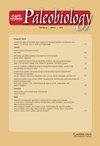生物体、群落和物种的选择和宏观进化水平
IF 2.7
2区 地球科学
Q2 BIODIVERSITY CONSERVATION
引用次数: 0
摘要
群体的适合度通常被认为是组成成员的平均适合度。这一假设有助于建立多级选择模型,但不加批判地采用这一假设却阻碍了我们对多级选择在自然界中实际作用的理解。如果群体适合度只等于平均成员适合度,那么在所有多级选择情景中,削弱群体级选择的重要性就是一件轻而易举的事--物种选择可以像群体选择一样被简化为生物体选择。由于不同层次的选择可以作用于单一性状,例如体型,因此必须有一种方法可以将一个层次的适应性转化为另一个层次的适应性。这样就可以计算出每个层次的选择贡献。如果高层次的适应性不是成员适应性的简单函数,那么它们之间又是如何交错的呢?在这里,我们重新引入利-范-瓦伦(Leigh Van Valen)的论点,将扩展作为适合度的一个组成部分。我们的研究表明,即使我们不赞同范-瓦伦最初提出的关于适应性的能量观点,扩张也是适应性不可分割的一部分。从等级的角度来看,扩张是人口适存度从一个等级向下一个等级的投射;一个等级的出生和死亡差异会产生上一个等级的扩张差异。将扩展纳入我们的概念工具包,有助于减轻我们对使用多种方法识别选择层次的能力的担忧,并允许将各种形式的多层次选择视为同一基本过程的表现形式。本文章由计算机程序翻译,如有差异,请以英文原文为准。
Levels of selection and macroevolution in organisms, colonies, and species
The fitness of groups is often considered to be the average fitness among constituent members. This assumption has been useful for developing models of multilevel selection, but its uncritical adoption has held back our understanding of how multilevel selection actually works in nature. If group fitness is only equal to mean member fitness, then it is a simple task to erode the importance of group-level selection in all multilevel scenarios—species selection could then be reduced to organismal selection as easily as group selection can. Because selection from different levels can act on a single trait, body size, for example, there must be a way to translate one level of fitness to another. This allows the calculation of the contributions of selection at each level. If high-level fitness is not a simple function of member fitness, then how do they interlace? Here we reintroduce Leigh Van Valen’s argument for the inclusion of expansion as a component of fitness. We show that expansion is an integral part of fitness even if one does not subscribe to the energetic view of fitness from which Van Valen originally derived it. From a hierarchical perspective, expansion is the projection of demographic fitness from one level to the next level up; differential births and deaths at one level produce differential expansion one level above. Including expansion in our conceptual tool kit helps allay concerns about our ability to identify the level of selection using a number of methods as well as allowing for the various forms of multilevel selection to be seen as manifestations of the same basic process.
求助全文
通过发布文献求助,成功后即可免费获取论文全文。
去求助
来源期刊

Paleobiology
地学-古生物学
CiteScore
5.30
自引率
3.70%
发文量
38
审稿时长
>12 weeks
期刊介绍:
Paleobiology publishes original contributions of any length (but normally 10-50 manuscript pages) dealing with any aspect of biological paleontology. Emphasis is placed on biological or paleobiological processes and patterns, including macroevolution, extinction, diversification, speciation, functional morphology, bio-geography, phylogeny, paleoecology, molecular paleontology, taphonomy, natural selection and patterns of variation, abundance, and distribution in space and time, among others. Taxonomic papers are welcome if they have significant and broad applications. Papers concerning research on recent organisms and systems are appropriate if they are of particular interest to paleontologists. Papers should typically interest readers from more than one specialty. Proposals for symposium volumes should be discussed in advance with the editors.
 求助内容:
求助内容: 应助结果提醒方式:
应助结果提醒方式:


